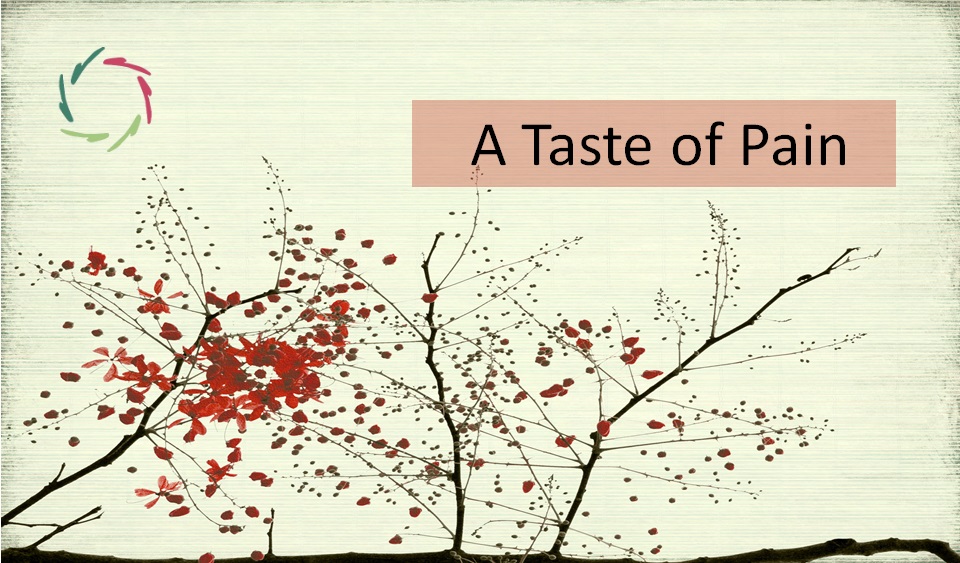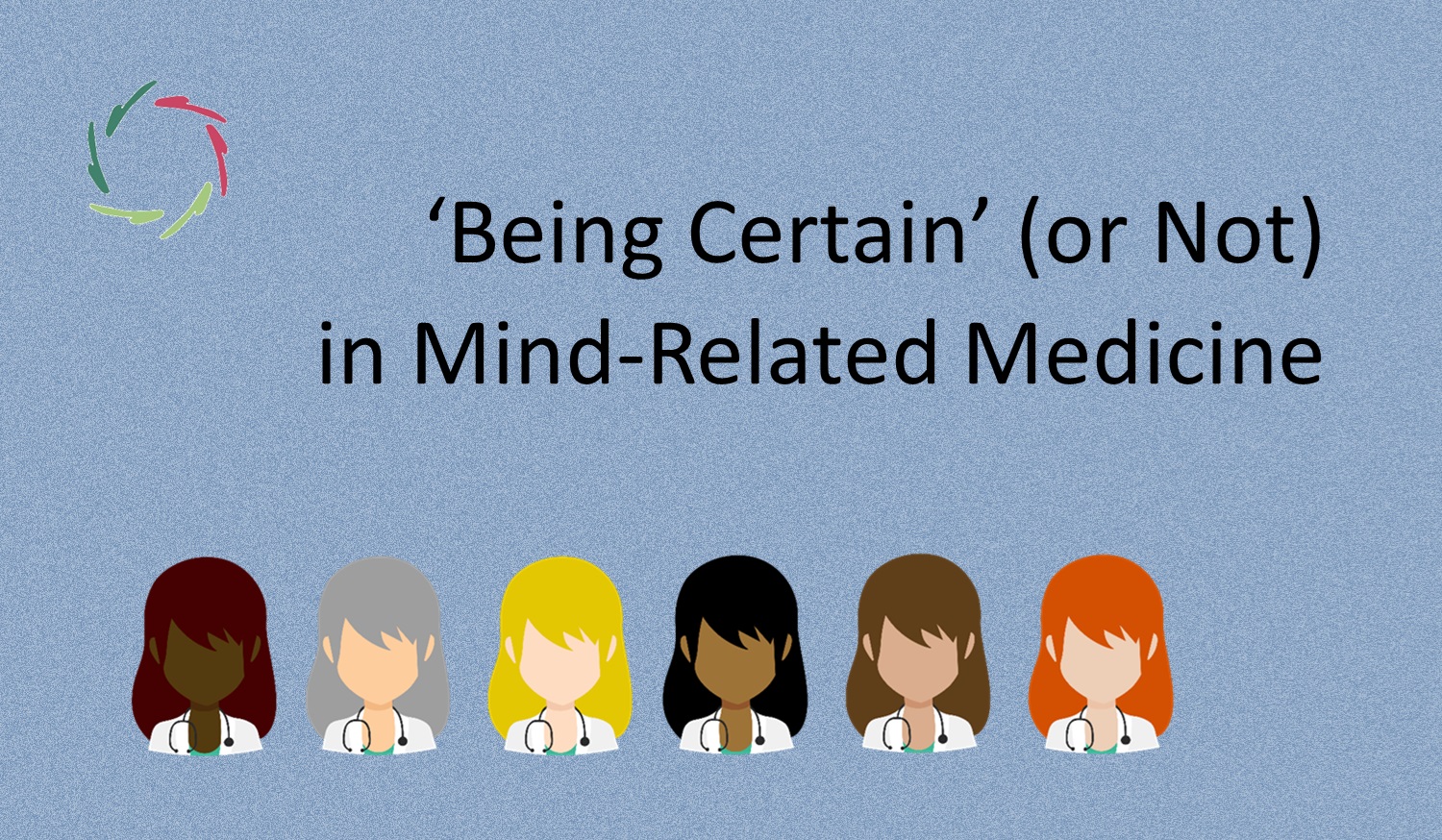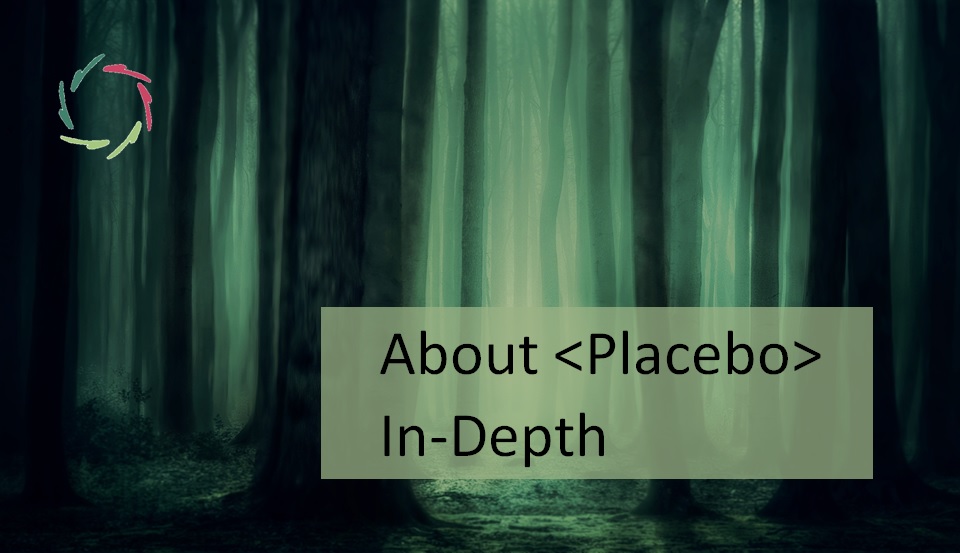A Taste of Pain

Pain is not always easy to ‘endure’ if you necessarily want to ‘endure’ it.
There are only 4 basic tastes (or 5, if you count in ‘unami’)
that we can distinguish on the tongue: salty, sour, sweet and bitter. All other flavors that we taste with the tongue are somehow combinations of these 4.
Makes one think? Definitely. Because, what to do with spicy?
Okay. Of course we also taste with our nose. Fortunately mouth and nose are close to each other. The aromas of our nutrients have every chance to reach the olfactory organ in one go and to contribute to what we call ‘taste’. Plus: what you hear or read less frequently: also the ‘sight’ really tastes. Take for example something that looks like puke. Yes puke. That doesn’t taste good.
But take the same food in a consistency that doesn’t look like puke at all, and it will taste good indeed.
We taste with our tongue. We taste with our nose. We taste with our eyes. We taste with the idea of how the food is prepared. We taste with the idea by whom the food is prepared. We taste with so many factors at the same time that it is all too much to take in.
😊
What to do with spicy?
Actually it’s curious to know that we have no tongue-buds for the taste ‘spicy’. What’s more, neither nose, nor eye, nor ear or whatever is involved in ‘spicy’. Quo vadis?
Pain. Because that is what this text is about.
‘Spicy’ happens to be nothing or nobody else but pain.
‘Spicy’ is not a flavor. It is pain.
I must admit that I, like many other people, like to eat spicy food. Really. I like to hurt my tongue. In the right circumstances I even spend money for it. Just like many others, luckily, otherwise I would think there is something wrong with me.
We’re so glad when everyone is ‘goofing around’ in the same direction, aren’t we? In the same direction and yet different. Always a little different. Meeting yourself is fun in a dream now and then, and also in reality now and then, but without overdoing it… because then you are not certain anymore: who’s who?
So, pain. And enjoying pain. And lo and behold, even learning from it, growing due to it.
Just think about everything that hurts. In what you do. In what you don’t do. In with whom you do it. If you take a moment to think about it, it’s astonishing.
That’s what is meant by: “You have to learn to appreciate it”.
Most of what we call real ‘culture’, you have to learn… just like you have to learn to appreciate food, which really hurts in the first place.
Pain is no small deal.
Did you know that most of what we call ‘pain’ (in the negative sense of the word) actually stems from our resistance against that same pain?
‘Curiously’, you might say, but it becomes even more curious as you go deeper into it. Deeper and deeper. For example: If you don’t learn to appreciate ‘pain’ on your tongue, you ignore half India. To begin with. If you do not learn to accept the pain in your neck, the muscles in your neck will get painfully tensed. If you do not dare to move your aching legs, your leg muscles will get painfully stiff. If you want to push the pain out of your bowels, you just make it worse. Even deeper: what you call ‘pain’, IS to a large extent your resistance against it: the pain of not wanting to suffer. Pain is not a kind of thermometer. Pain is the emotion itself.
Pain is always real AND pain is always in your mind.
Look: you are living on this small planet, and it’s a wonder you live here, and it is all the more a miracle…. as you accept pain. HA!
Not simply pain. Not the pain you want to get rid of and not the one you ‘accept’ because you have no other choice.
And also not the pain that you accept because it will prevent even more pain.
And also not the pain that is pulling you out of yourself because of a superficial pleasure.
But indeed the pain that is part of the background coloring, or maybe even of the color palette that allows you to color your world. And then it’s the pain in many things: the pain in the food, the pain in sports, the pain due to fighting for a goal that is oh so far away. O goal! O lust for life!… The pain in meditation, the pain in the fingers that learn to play the guitar, the pain in the back due to prolonged sitting while thinking and writing, the pain in the legs if you have been dancing for hours.
We think: that’s the pain you accept in a pain/pleasure balance.
We are missing the point.
It is the pain itself that – more than you think – is part of the pleasure. At least: if it’s a deep pleasure, a pleasure that touches you within.
There are many people who suffer from chronic pain. Well: the pain is real. The chronic aspect is real. The suffering is real. The people are of course real: they do not lie. Everything is so real and yet it could be more real.
“Il faut souffrir pour être belle…” Yes? As long as it is more real.
We people thrive more on symbols than even on calories.
At least we men do. And women do. And the kids and the elders of days do too.
If the symbols are missing, and I mean the real symbols, the symbols ‘to die for’, then we sometimes do throw ourselves carelessly on calories… Makes one think? What we are doing to this world is bad. What we are doing to ourselves is worse.
Therefore.
People with chronic pain often do not see the reason nor the purpose of their pain. And yes, that hurts! Or what did you expect?
Placebo as self-deception then?
Not necessary, though the easiest way. But not necessary. Indeed the easiest way. But a lie. And what does a lie do? It deceives you. Or what did you expect? A lie can bring you back into your comfort zone. But it does not satisfy you as who you really are.
You see: you want something. You want that. You go for it. You want her. You want him. You would do anything for it. A heartache is no sorrow… in the sense that it ‘hurts’. It is a pain that is more profound than ‘pain’ and so it is, in principle, no ‘pain’. What then? It’s something we want to live for. We even risk dying when that pain, deep within, has gone. In that case, if death does not come by itself, one might even help it a bit. That’s desperation: no hope. Hope springs eternally. Despair causes death.
The same is true for chronic pain. Or rather: before the chronic pain is manifested. Not even in time, but in emotion. Not even in emotion, but in meaning.
So, in case someone has chronic pain: search for meaning.
Cherchez la femme. Cherchez l’homme. Cherchez le Vide. First come, first … as song as you search… as long as you keep on searching. Because as long as there is ‘keeping on …’, there is hope of course. Finding is even better, but then it better be a real finding. Nothing is as bad as a finding of what is not wanted, and because of that…
The same is true for chronic pain. People who suffer from chronic pain search and search and then they sometimes get ‘something’ and then they do not even search anymore! Of course they still do so, a bit. What matters then, for someone who wants to help, is to find that bit of searching. Like a spark in a wisp of straw. It’s always there. That’s what ‘life’ is. It’s always there, but you need to be careful with it. You gently blow. You hold on for a while. You are looking at it. A smile.
The same is true for chronic pain. It’s often very hard to realize:
pain is life. Life is spicy.
But pain may also be suffering. Suffering is not wanting to eat anymore.
(What does ‘wanting’ mean?)
Then taste has gone. Food has gone. Everything has gone. Such suffering is a depression. A depression is not a disease. A depression is refusing to open up. Even the sun doesn’t shine anymore.
And if there is no other taste, all that remains is the taste of really chronic pain.


